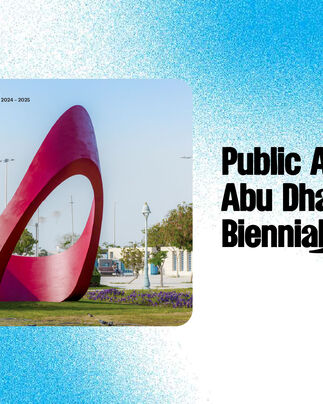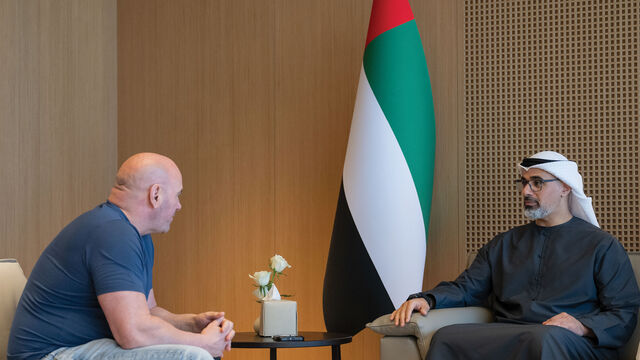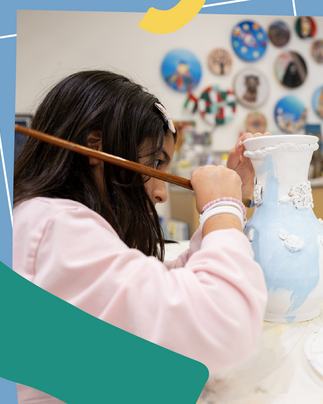The Department of Culture and Tourism - Abu Dhabi (DCT Abu Dhabi) and the Ministry of Education have launched an educational resource entitled Al Ain Cultural Sites Inscribed on UNESCO’s World Heritage List as part of the national educational curriculum.
The publication falls within the framework of a new education strategy aimed at students and teachers at public and private schools across the United Arab Emirates.
The Educator Resource is a qualitative addition to the national education and social studies curricula for eleventh grade students that is now being used in all public schools that follow the curriculum of the UAE Ministry of Education. Al Ain Cultural Sites Inscribed on UNESCO’s World Heritage List is published in both Arabic and English and promotes the Cultural Sites of Al Ain, particularly those that have been added to the UNESCO World Heritage List. It enhances students’ awareness of the importance of the Al Ain sites as part of a common global and human heritage, as well as the role these students, and all members of society, must play in preserving them for the future.
The Educator Resource was put together by DCT Abu Dhabi under the supervision of leading experts and specialists in the fields of education, culture, and history. DCT Abu Dhabi’s education initiatives are based on an integrative approach with multidisciplinary interactive media and strategies for individual and group learning, to achieve educational goals in cognitive, practical, and behavioural fields related to cultural education.
His Excellency Hussain Ibrahim Al Hammadi, Minister of Education, said: “This publication, issued by the Department of Culture and Tourism - Abu Dhabi, constitutes an important educational and historical resource that sheds light on Al Ain Cultural Sites listed on the UNESCO World Heritage List, some of which date back thousands of years. It offers a wealth of information about the cultural history of these sites, particularly those from the Bronze Age and the Iron Age, such as the Jebel Hafit tombs, the Hili settlements, the Bida Bint Saud tombs, the falaj irrigation systems, and the historical oases.”
His Excellency Al Hammadi added: "The content of this book is in line with the Ministry's vision and philosophy and meets the criteria for subjects like social studies and national education by providing students with new knowledge, experiences, and skills. It also helps in enhancing their national identity and building their Emirati character by studying the past and drawing knowledge and lessons to help them in building the present and the future.”
His Excellency Mohamed Khalifa Al Mubarak, Chairman of DCT Abu Dhabi, said: “Educating future generations about our country’s rich cultural heritage and historic environment is one of the Department of Culture and Tourism – Abu Dhabi’s core mandates and greatest responsibilities. Education is a vital pillar in preserving our history and heritage, inspiring students and embedding the values of good citizenship as they learn about safekeeping our past, which is the true wealth of the nation.”
His Excellency Al Mubarak added: “This resource employs a simplified teaching methodology at the highest standards of global education and development. This publication is another milestone in our significant efforts to integrate cultural heritage into the curriculum of government schools through innovative modern educational tools. A curriculum featuring the Educator Resource will ensure that students are not only aware of the Cultural Sites of Al Ain, but will fully realise their importance to our society and learn how they can play an active role in the safeguarding of these sites for future generations.”
Al Ain Cultural Sites Inscribed on UNESCO’s World Heritage List supports the Ministry of Education’s plans to develop and update educational curricula in line with current sector developments. The book has been integrated into the eleventh-grade national curriculum and is being taught in all public and private schools in the country that teach the Ministry of Education curriculum. Encouraging critical thinking, research, analysis, and exploration, it also introduces ideas, lessons, and experiences that contribute to refining and developing the student’s character by reinforcing positive values.
The book begins by providing relevant content about important World Heritage Sites in the Al Ain region, such as Jebel Hafit, Hili, Bida Bint Saud, the oases and the aflaj. It includes an introduction and a preface, followed by four chapters of classroom lessons, with specific objectives, explanations, questions, and suggested activities for students.
These are complemented by interactive tutorials, illustrative photos and videos, relevant internet links, a list of concepts and definitions, and a list of resources and references for both teachers and students.










